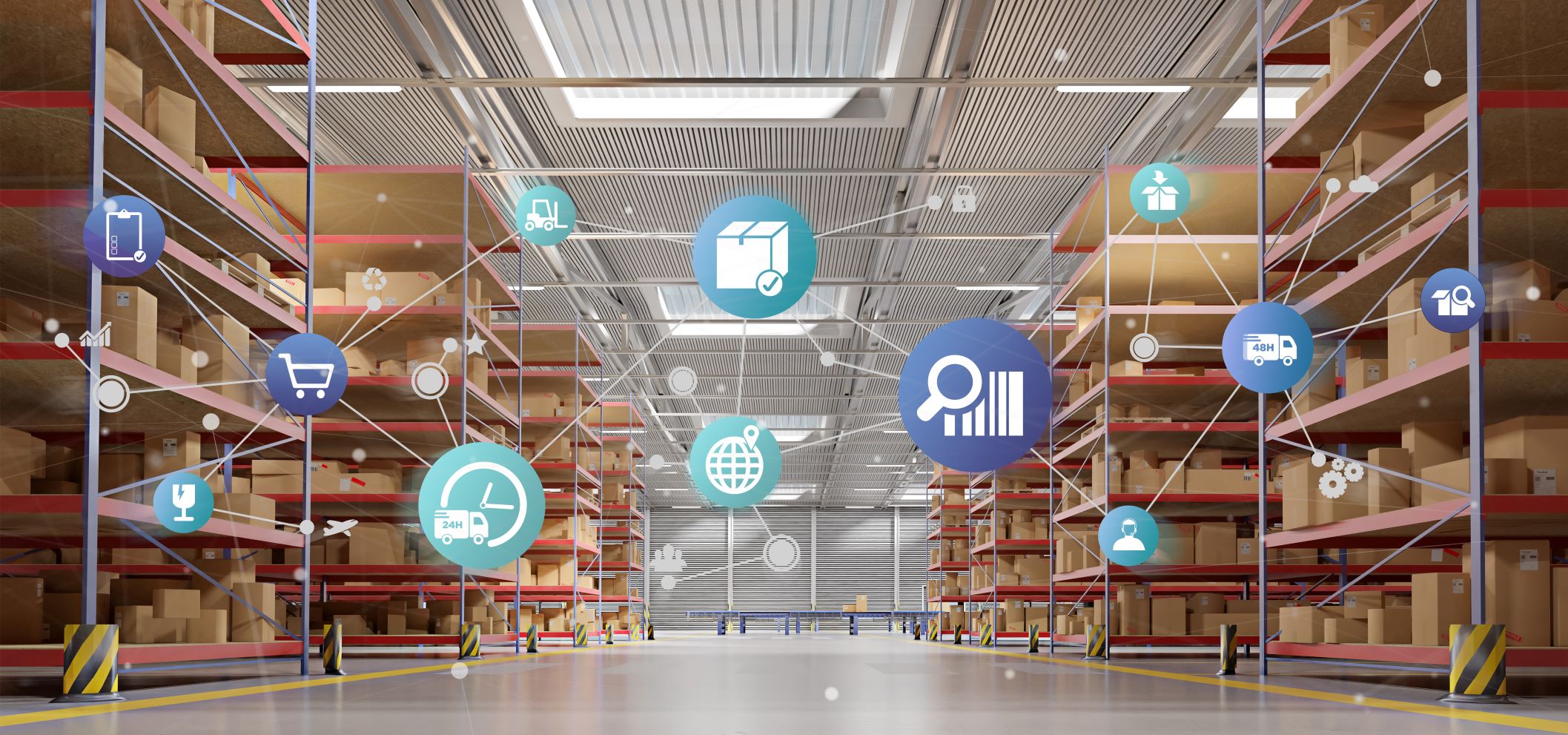
Drop off your CV
We'd love to hear from you. Send us your CV and one of our specialist consultants will be in touch.

Supply Chain Management (SCM) organisations have suffered during the last two years with the impact of the pandemic, the effects of borders being closed and delays in supply and distribution, companies in this space have had to reassess their procedures and find ways to work around these disruptions. Despite these bleak repercussions, the increasing prevalence of Software as a Service (SaaS) technologies offers some reprieve to these organisations to help improve processes, become more time efficient and gain better visibility over the entirety of the supply chain.
The opportunity to utilise SaaS applications and platforms allows businesses in supply chains to counter the negative impact of the pandemic to ultimately improve their end-to-end management and provide an enhanced quality of service to their customers. As discussed in “The Evolving SaaS Industry and the Growing Need to Attract Talent”, SaaS is an ever-evolving industry with high predictions of continued growth over the coming years.
The technologies available within this space are proving beneficial across all industries and SCM companies are amongst the many who can reap the rewards it offers. Flexible, cloud-based software provides a more aligned, convenient and scalable view into supply chain operations and ultimately allows organisations to gain visibility and provide transparency over the experience that so many investors and customers are calling for. It’s no surprise that according to Statista, 87% of supply chain and logistics firms are embracing Software as a Service to innovate their businesses.

There are three main SaaS systems that work in conjunction with one another as part of a broad supply chain management system. Each platform can work together but they play largely distinct roles in SCM. For organisations who are looking to innovate their processes and transform their operations, these software platforms need to be considered.
TMS is specialised software for planning, executing and optimising the shipment of goods, it allows companies to manage logistics associated with the movement of physical goods. Users are able to compare shipping methods and optimise load and delivery routes to get the most cost and time effective options, they can book their desired shipment and freight can be tracked across local and global routes. It also automates time-consuming tasks such as trade compliance documentation and freight billing. A TMS is designed to improve shipping efficiencies, reduce costs, gain real-time supply chain visibility and ensure customer satisfaction. An effective Transport Management System can reduce complexity and cost for both the business and end customer.Some of the key features of a modern TMS software include:- Transportation planning and execution: Procurement and freight shipment are streamlined through automated carrier rate comparison and booking. Users can plan the most efficient route for the transportation of goods by optimising loads and choosing their mode of shipment whilst real time track and trace capabilities allow progress to be monitored.- Freight management: The quote to contract process is streamlined. It provides management of freight costing, order management, rate determination, freight billing and settlement for both multimodal and intermodal transportation. - TMS dashboards, reporting and analytics: Real time visibility into all aspects of the transportation process including forecasting transport demand and analysis of rates and profitability. This allows users to make immediate, data driven decisions and adapt quickly to unforeseen circumstances.A SCM/TMS will prove highly beneficial for any company that is directly responsible for transporting a significant volume of goods or hire providers to do this for them. With the ongoing complexities and disruptions in today’s supply chains, these types of systems are fast becoming a necessity.
WMS is software that allows companies to manage and control their daily warehouse operations, from the moment materials enter the warehouse to the moment they leave. With the rise of services like Amazon who offer unprecedented speed in their delivery, pressure has been put on wholesales and 3PL providers to fulfil omnichannel orders to the same level. An effective WMS can streamline every facet of warehouse management, from receiving and storage, picking, packing and shipping, to inventory tracking and replenishment. It digitalises inventory management and offers real-time visibility into a company’s entire inventory, in warehouses and in transit. A Warehouse Management System can do all of this from a single interface and is able to integrate with other tools, including basic operations such as bar code scanning and RFID labelling to more advanced robotics and even augmented reality wearables. A vigorous WMS is essential to any business that has on-hand inventory and can help reduce costs and improve efficiencies in many areas. It is able to improve operational efficiency by reducing errors, eliminating unnecessary work and ensuring smoother operations and the ability to handle higher volumes. They reduce waste and costs by identifying goods that need to be picked first and those which might need a sales push, it can even determine the most effective use of warehouse space and inventory placement to optimise travel paths. Real time inventory visibility allows for more accurate demand forecasts and improves traceability. It can also improve labour management and lead to better customer and supplier relationships due to the improved overall process.

Last but certainly not least is ERP, this software system can run a company’s entire business by supporting and automating core business processes needed to run the business such as finance, HR, manufacturing, procurement amongst others. It is essentially able to manage all these processes on one integrated system. In this day and age, ERP’s have drastically evolved and are now delivered through the Cloud utilising the latest technologies such as AI and machine learning to provide intelligent automation, great efficiency and instant insight across the business. The Enterprise Resource Planning can be connected to the TMS and WMS to provide a full function service across the board for Supply Chain Management. It can also connect internal operations with business partners around the world, giving companies the ability to collaborate globally with speed and agility.
In SCM, ERP is needed to connect the three systems together to allow the whole supply chain process to integrate onto one platform. ERP systems are able to offer higher productivity, deeper insights, accelerated reporting, lower risk, simpler IT and improved agility to SCM organisations.
Supply chain management is past the days of offline management but we are now surpassing the traditional digital methods. Traditional SCM digital systems require expensive, specialised hardware and often onsite infrastructure to operate. SaaS software utilises the cloud to operate and in turn offers a far more flexible and evolved digitalisation to businesses. Storing data in the Cloud removes the need for onsite infrastructure and the security and maintenance required for that. With a Cloud-based service, a company only pays for what they need as opposed to an in-house solution, where scalability needs to be factored in. The biggest issue with in-house solutions is obsolescence. With the fast evolution of technology, new applications seem to become out of date in the time it takes to update them. SaaS continuously supports and updates, adapting to changing technology as it comes up. SaaS allows Supply Chain Management organisations to be up to date at every stage of their processes and keep up to date with the evolution of technology. As attractive as it all sounds, this then raises the need for qualified talent to implement, operate and maintain these systems.
 At CSG Talent we have helped many SCM organisations find the right people to step in and digitalise their processes for ongoing success. Additionally, we have helped many SaaS organisations in their recruitment processes. An example of this is the work CSG Talent conducted with a high growth technology start up, project44. The company is a high growth technology start up and their team have developed a platform for shippers and logistics providers with world leading software to improve efficiencies in the industry. CSG Talent were instructed to perform searches for 65 new positions for project44, all of which were successfully carried out.
At CSG Talent we have helped many SCM organisations find the right people to step in and digitalise their processes for ongoing success. Additionally, we have helped many SaaS organisations in their recruitment processes. An example of this is the work CSG Talent conducted with a high growth technology start up, project44. The company is a high growth technology start up and their team have developed a platform for shippers and logistics providers with world leading software to improve efficiencies in the industry. CSG Talent were instructed to perform searches for 65 new positions for project44, all of which were successfully carried out.
“CSG Talent were engaged by project44 at a time where the organization was undergoing an extensive period of growth. We worked closely with their internal talent team and hiring managers to not only understand the brief and deliver a bespoke solution, but to also map the hiring landscape in regions that project44 previously had limited physical presence. The result was a successful campaign that allowed our client to execute their hiring plans effectively. We are immensely proud to contribute to the ongoing growth of an industry leader.” - CSG Talent
Our vertical market approach means we specialise within Supply Chain Management and SaaS. With a deep understanding of operations within these industries and our highly qualified talent pools we can assist your business in finding the right talent to take your business where it needs to go - get in touch to find out more about how we can support you.